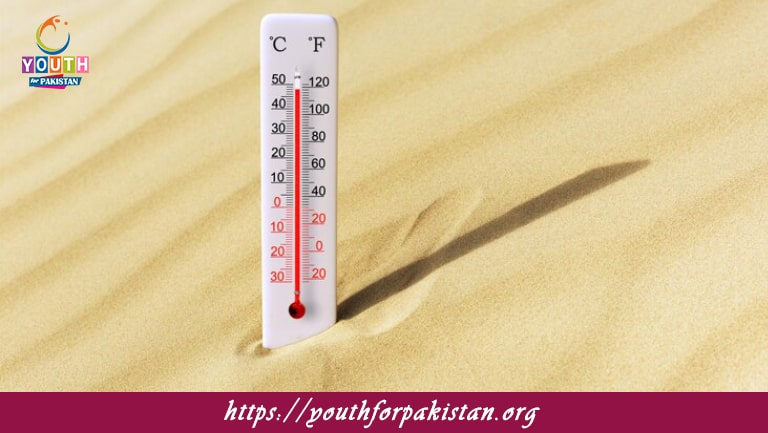Welcome to the Heat and Thermodynamics MCQs with Answers. In this post, we are sharing Heat and Thermodynamics Multiple Choice Questions and Answers in Everyday Science section for various competitive exams in Pakistan. Each question offers a chance to enhance your knowledge regarding Heat and Thermodynamics online MCQs Test.
Which of the following is a measure of the average kinetic energy of the particles in a substance?
A) Temperature
B) Heat
C) Pressure
D) Volume
What is the SI unit of heat?
A) Joule
B) Calorie
C) Watt
D) Kelvin
Which law states that energy cannot be created or destroyed, only transferred or converted?
A) First Law of Thermodynamics
B) Second Law of Thermodynamics
C) Third Law of Thermodynamics
D) Zeroth Law of Thermodynamics
What is the process of heat transfer through direct contact called?
A) Conduction
B) Convection
C) Radiation
D) Insulation
In which type of heat transfer does hot air rise and cold air sink?
A) Convection
B) Conduction
C) Radiation
D) Insulation
Which of the following is an example of heat transfer through radiation?
A) Feeling warmth from the sun
B) Boiling water in a pot
C) Using a heating pad
D) Ironing clothes
What is the term for the amount of heat required to raise the temperature of one gram of a substance by one degree Celsius?
A) Specific heat capacity
B) Heat of fusion
C) Heat of vaporization
D) Thermal conductivity
Which of the following is the primary cause of the greenhouse effect?
A) Absorption and re-radiation of infrared radiation by greenhouse gases
B) Increased solar radiation reaching Earth
C) Decrease in atmospheric pressure
D) Direct heat conduction from the sun
What is the principle behind a heat engine?
A) Converting heat energy into mechanical work
B) Converting mechanical work into heat energy
C) Increasing the temperature of a substance
D) Transferring heat through radiation
Which of the following describes an adiabatic process?
A) A process in which no heat is exchanged with the surroundings
B) A process in which heat is constantly added
C) A process where the temperature of the system remains constant
D) A process that occurs at high pressure
What is the name of the device used to measure temperature?
A) Thermometer
B) Barometer
C) Anemometer
D) Hydrometer
Which of the following is the term for the heat required to convert a solid into a liquid at its melting point?
A) Heat of fusion
B) Heat of vaporization
C) Specific heat capacity
D) Latent heat
Which of the following statements is true about the Second Law of Thermodynamics?
A) Heat naturally flows from hot to cold objects
B) Heat can flow from cold to hot objects without external work
C) The total energy of an isolated system remains constant
D) Entropy of an isolated system decreases over time
What is the term for the process of heat transfer in fluids due to the movement of the fluid itself?
A) Convection
B) Conduction
C) Radiation
D) Insulation
Which of the following is a good conductor of heat?
A) Copper
B) Wood
C) Plastic
D) Air
What is the term for the energy required to convert a liquid into a gas without a change in temperature?
A) Heat of vaporization
B) Heat of fusion
C) Specific heat capacity
D) Latent heat
Which type of thermodynamic process occurs at constant pressure?
A) Isobaric process
B) Isochoric process
C) Isothermal process
D) Adiabatic process
What is the device called that converts heat energy into mechanical energy?
A) Heat engine
B) Refrigeration
C) Thermometer
D) Insulator
What does the Zeroth Law of Thermodynamics state?
A) If two systems are each in thermal equilibrium with a third system, they are in thermal equilibrium with each other
B) Energy cannot be created or destroyed
C) Entropy of an isolated system always increases
D) The pressure of a gas is inversely proportional to its volume
Which of the following processes involves the transfer of heat through electromagnetic waves?
A) Radiation
B) Conduction
C) Convection
D) Insulation
What is the principle behind the operation of a refrigerator?
A) Removing heat from the interior and releasing it to the surroundings
B) Converting mechanical energy into heat energy
C) Increasing the temperature of the interior
D) Using heat to produce mechanical work
Which of the following laws states that the entropy of an isolated system always increases over time?
A) Second Law of Thermodynamics
B) First Law of Thermodynamics
C) Third Law of Thermodynamics
D) Zeroth Law of Thermodynamics
Which substance has the highest specific heat capacity among the following?
A) Water
B) Iron
C) Sand
D) Alcohol
What type of energy transfer occurs when a metal rod feels warm to the touch after being placed in a hot liquid?
A) Conduction
B) Convection
C) Radiation
D) Insulation
What is the term for the measure of a substance’s resistance to temperature change?
A) Specific heat capacity
B) Thermal conductivity
C) Latent heat
D) Heat of fusion
Which of the following statements is true about the Third Law of Thermodynamics?
A) The entropy of a perfect crystal approaches zero as the temperature approaches absolute zero
B) Heat naturally flows from cold to hot objects
C) Energy cannot be created or destroyed
D) The entropy of a system always decreases over time
What type of process involves no heat exchange with the surroundings?
A) Adiabatic process
B) Isothermal process
C) Isobaric process
D) Isochoric process
Which of the following best describes a thermodynamic cycle?
A) A sequence of processes where the system returns to its initial state
B) A single irreversible process
C) A process with constant volume
D) A process where no work is done
What does the term “latent heat” refer to?
A) Heat absorbed or released during a phase change without a change in temperature
B) Heat absorbed or released due to a temperature change
C) Heat transferred by conduction
D) Heat required to raise the temperature of a substance
Which of the following processes involves heat transfer in a vacuum?
A) Radiation
B) Conduction
C) Convection
D) Insulation
Which type of heat transfer is used in a microwave oven?
A) Radiation
B) Convection
C) Conduction
D) Insulation
What is the term for the energy transfer from a hotter object to a cooler object?
A) Heat
B) Work
C) Entropy
D) Pressure
Which of the following best describes the term “thermal equilibrium”?
A) When two objects are at the same temperature and no heat flows between them
B) When heat flows from a cooler to a warmer object
C) When the pressure in a system is constant
D) When the volume of a gas changes with temperature
Which of the following is the primary principle behind the operation of an air conditioner?
A) Removing heat from the interior and releasing it to the exterior
B) Converting heat energy into electrical energy
C) Increasing the temperature of the interior air
D) Using insulation to prevent heat transfer
Which of the following substances has the lowest specific heat capacity?
A) Lead
B) Water
C) Iron
D) Sand
What is the term for a process in which the temperature of a system remains constant while heat is added or removed?
A) Isothermal process
B) Adiabatic process
C) Isobaric process
D) Isochoric process
Which principle is used in a heat pump to move heat from a cooler area to a warmer area?
A) Refrigeration cycle
B) Heat engine cycle
C) Adiabatic process
D) Isothermal process
What is the effect of increasing the temperature of a gas while keeping its volume constant?
A) Increase in pressure
B) Decrease in pressure
C) Decrease in temperature
D) Increase in volume
Which of the following statements is true about the specific heat capacity of water compared to most other substances?
A) Water has a higher specific heat capacity
B) Water has a lower specific heat capacity
C) Water’s specific heat capacity is equal to that of most substances
D) Water’s specific heat capacity is negligible
What type of energy transfer occurs in a solid when heat is conducted from one end to the other?
A) Conduction
B) Convection
C) Radiation
D) Insulation
Which of the following is a measure of a system’s disorder or randomness?
A) Entropy
B) Heat
C) Temperature
D) Work
What is the energy required to raise the temperature of 1 kilogram of water by 1 degree Celsius called?
A) Kilojoule
B) Calorie
C) Joule
D) Watt
Which of the following processes is an example of heat transfer by convection?
A) Boiling water in a pot
B) Sun heating the Earth
C) Touching a hot stove
D) Heating a metal rod
What does the term “thermal conductivity” refer to?
A) The rate at which heat is conducted through a material
B) The amount of heat required to change the temperature of a substance
C) The capacity of a substance to store thermal energy
D) The heat lost through radiation
Which of the following laws is concerned with the direction of heat flow?
A) Second Law of Thermodynamics
B) First Law of Thermodynamics
C) Third Law of Thermodynamics
D) Zeroth Law of Thermodynamics
What is the term for the energy needed to raise the temperature of a substance without changing its state?
A) Sensible heat
B) Latent heat
C) Specific heat
D) Thermal energy
If you are interested to enhance your knowledge regarding Physics, Chemistry, Computer, and Biology please click on the link of each category, you will be redirected to dedicated website for each category.










